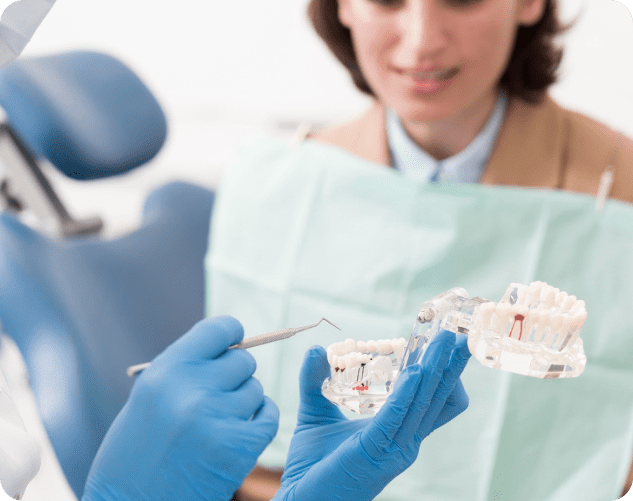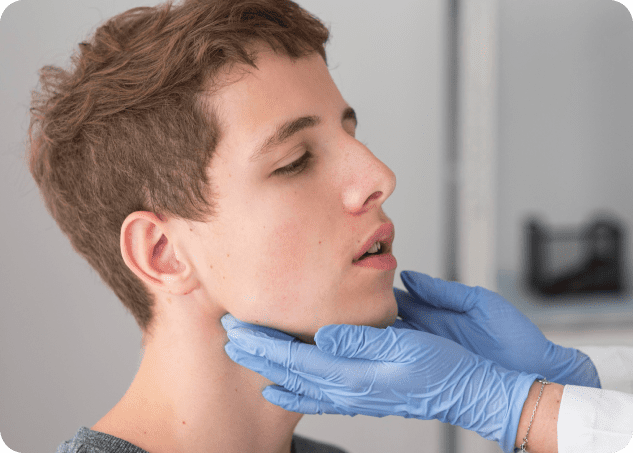Introduction to Jaw Surgery
Jaw surgery, also known as orthognathic surgery, is a type of oral and maxillofacial surgery that involves the correction of irregularities in the jaw and face. This guide will provide an in-depth understanding of jaw surgery, its purpose, and how it can improve your quality of life.
What is Jaw Surgery?
Purpose of Jaw Surgery
Jaw surgery addresses both functional challenges and aesthetic The main purpose of jaw surgery is to correct a severe malocclusion (misalignment of teeth) that cannot be corrected through orthodontics alone. Malocclusion can be caused by a discrepancy in the growth of the upper and lower jaws, trauma, or congenital anomalies.for individuals with jaw irregularities. It is often a crucial step in achieving better oral health and functionality.

Improving Functionality
One of the primary purposes of jaw surgery is to improve the functionality of the jaw. This includes:
Enhancing Appearance
While the main focus of jaw surgery is often to improve function, it can also significantly enhance a patient’s appearance. By correcting structural issues, jaw surgery can result in:
Importance of Jaw Surgery in Improving Oral Health and Facial Aesthetics
Jaw surgery, also known as orthognathic surgery, is a significant procedure that can have a profound impact on a person’s oral health and facial aesthetics. It is often recommended for individuals who have severe jaw misalignment issues that cannot be corrected through orthodontics alone. Here, we will delve into the importance of jaw surgery in improving oral health and facial aesthetics.
The Role of Jaw Surgery in Oral Health
Oral health is more than just having a beautiful smile. It is about ensuring that the mouth, teeth, and gums are healthy and function properly. Misaligned jaws can lead to a host of oral health issues, which is where jaw surgery comes in.
The Role of Jaw Surgery in Facial Aesthetics
Oral health is more than just having a beautiful smile. It is about ensuring that the mouth, teeth, and gums are healthy and function properly. Misaligned jaws can lead to a host of oral health issues, which is where jaw surgery comes in.
Common Conditions Requiring Jaw Surgery
Cleft Lip and Palate Surgery: Role of Jaw Surgery in Treatment
Understanding the role of jaw surgery in the treatment of cleft lip and palate can help patients and their families prepare for the process. This guide will provide an in-depth look at the importance of jaw surgery in the treatment of cleft lip and palate, the different types of jaw surgeries, and the recovery process.
The Importance of Jaw Surgery in Cleft Lip and Palate Treatment
Jaw surgery, also known as orthognathic surgery, plays a crucial role in the treatment of cleft lip and palate. It is often necessary to correct the alignment of the jaw and teeth, improve facial appearance, and enhance the patient’s ability to chew, speak, and breathe. The surgery is typically performed in the late teenage years when the jaw has stopped growing.
Types of Jaw Surgery for Cleft Lip and Palate
There are several types of jaw surgery that may be performed as part of cleft lip and palate treatment. The type of surgery recommended will depend on the specific needs of the patient.
- Maxillary Advancement This surgery involves moving the upper jaw forward to align it properly with the lower jaw. It can improve the patient’s ability to chew and speak, as well as their facial appearance.
- Mandibular Setback In this procedure, the lower jaw is moved backward to align with the upper jaw. This surgery is often performed when the lower jaw is disproportionately large compared to the upper jaw.
- Chin Surgery Chin surgery, or genioplasty, may be performed to improve the appearance and proportion of the face. It can involve either moving the chin forward or backward, or reshaping the chin.
The Recovery Process
The recovery process after jaw surgery can vary depending on the specific procedure performed and the individual patient’s health. However, there are some common aspects of recovery that most patients can expect.
- Initial Recovery Immediately after surgery, patients will typically spend one to two days in the hospital. During this time, pain can be managed with medication, and a liquid diet may be necessary for a few days.
- Long-Term Recovery Over the following weeks, patients will gradually transition to a normal diet. Regular follow-up appointments will be necessary to monitor healing and adjust any orthodontic appliances. Full recovery and healing can take several months.
- Physical Therapy Physical therapy may be recommended to help patients regain full function of their jaw. This can include exercises to improve jaw strength and flexibility.
In conclusion, jaw surgery is a vital part of the treatment for cleft lip and palate. It can significantly improve the patient’s quality of life by improving jaw function and facial appearance. As with any surgery, it’s important to understand the process and what to expect during recovery.
Understanding Malocclusion Correction with Jaw Surgery
Malocclusion, often referred to as a bad bite, is a common dental issue that affects many people. It occurs when there’s a discrepancy in the alignment of the upper and lower teeth, leading to a variety of oral health problems. Let’s delve deeper into the impact of malocclusion on tooth alignment and bite.
Types of Malocclusion
Before we examine the impact of malocclusion, it’s essential to understand its different types. These include:

Treatment for Overbite
Overbite can be corrected through various treatment options depending on its severity. These include:
- Orthodontic Braces: These help in moving the teeth to correct the overbite.
- Retainers: These are used after the braces to hold the teeth in their new position.
- Surgery: In severe cases, surgery might be required to reposition the jaw.
Mandibular Advancement Jaw Surgery for Correction of Overbite: sometimes just correcting teeth is not enough for best results.
It’s important to consult with a dental professional to determine the best treatment option for your specific condition.

Treatment for Underbite
Overbite can be corrected through various treatment options depending on its severity. These include:
- Orthodontic Braces: These help in moving the teeth to correct the underbite.
- Surgery: In severe cases, surgery might be required to reposition the upper or lower jaw, or both.
Mandibular setback jaw surgery.
Treatment Options for Open Bite
There are several treatment options available for correcting an open bite, depending on the severity of the condition and the age of the patient. These include:
- Orthodontic Treatment: Braces or clear aligners can be used to gradually move the teeth into the correct position.
- Oral Appliances: Devices such as a tongue crib or a palatal crib can help to stop habits like thumb sucking or tongue thrusting that contribute to an open bite.
- Surgery: In severe cases, jaw surgery may be necessary to correct an open bite.
Remember, it’s important to consult with a dental professional if you suspect you or your child has an open bite. They can provide a proper diagnosis and recommend the best treatment options for your specific situation.
Understanding Obstructive Sleep Apnea
Obstructive sleep apnea (OSA) is a common sleep disorder characterized by repeated interruptions in breathing during sleep. These interruptions, known as apneas, are caused by the collapse of soft tissue in the throat and block the airway, preventing air from getting into the lungs. Sleep apnea can cause a range of health problems, from daytime fatigue and decreased concentration to high blood pressure, heart disease, stroke, and diabetes.
The Role of Jaw Surgery in Treating Obstructive Sleep Apnea
Jaw surgery, also known as orthognathic surgery, can be an effective treatment for obstructive sleep apnea. This surgical procedure involves repositioning the jaws to increase the size of the upper airway. This can help to reduce the frequency of apneas, improve sleep quality, and reduce daytime sleepiness and other symptoms of sleep apnea.
Types of Jaw Surgery for Obstructive Sleep Apnea
There are several types of jaw surgery that can be used to treat obstructive sleep apnea. The type of surgery recommended will depend on the specific anatomy and needs of the patient.
Benefits of Jaw Surgery for Obstructive Sleep Apnea
Jaw surgery can provide several benefits for people with obstructive sleep apnea. These include:
Risks and Considerations
As with any surgical procedure, jaw surgery for obstructive sleep apnea carries some risks. These can include pain, swelling, infection, and changes in bite or facial appearance. It’s important to discuss these risks with your doctor before deciding on surgery.
Abnormal jaw growth: Receding or protruding jaws
Our facial profile and appearance play a significant role in how we perceive ourselves and how others perceive us. One way to enhance facial aesthetics is through jaw surgery, a procedure that can dramatically improve the balance and harmony of the face. This guide will provide an overview of how jaw surgery can enhance facial aesthetics.
Treatment for Gummy Smile and Overbite
After and before Maxillary Impaction for Gummy Smile

Lateral view of results after (left) and before maxillary impaction surgery for gummy smile (right).

Frontal view of maxillary impaction jaw surgery for correction (left) of gummy smile and overbite (right).
Understanding the Jaw’s Role in Facial Aesthetics
The jaw plays a critical role in defining the shape and symmetry of the face. A well-proportioned jaw can provide balance and harmony to the facial features, while a misaligned or disproportionate jaw can disrupt this balance.

Types of Jaw Surgery
- Maxillary Osteotomy: This procedure involves repositioning the upper jaw to correct issues such as an open bite, crossbite, or excessive overbite.
- Mandibular Osteotomy: This procedure involves repositioning the lower jaw to correct issues such as a receding or protruding lower jaw.
- Chin Surgery: This procedure can be performed to enhance the size and shape of the chin, which can improve the overall balance of the facial features.
Benefits of Jaw Surgery
Jaw surgery can provide numerous benefits, including improved facial balance and symmetry, enhanced jaw function, and increased self-confidence. It can also correct a variety of functional issues, such as difficulty biting, chewing, and speaking.
Preparing for Jaw Surgery
Preparing for jaw surgery can be a daunting and overwhelming experience, but with the right approach, it can also be a smooth and successful process. The first step in preparing for jaw surgery is to consult with a qualified oral surgeon who will assess your individual case and determine the best course of action for you. It is important to follow any pre-operative instructions given by your surgeon, which may include dietary restrictions, quitting smoking, and adjusting any current medications. It is also important to mentally prepare for the surgery by understanding the potential risks and complications, as well as having a support system in place for after the procedure. By following these steps and working closely with your surgeon, you can ensure that you are fully prepared for jaw surgery and on your way to a healthier and happier smile.
Consultation with Oral and Maxillofacial Surgeon
Consulting with an oral and maxillofacial surgeon is a crucial step in addressing complex dental issues, facial injuries, or disorders. This guide will provide you with a comprehensive understanding of what to expect during your consultation.
Before the Consultation
1. Research: Before your consultation, it’s beneficial to have a basic understanding of the procedure you’re considering. This will help you formulate any questions you may have for the surgeon.
2. Medical History: Prepare a detailed medical history, including any medications you’re currently taking, previous surgeries, and any allergies. This information will help the surgeon determine the best course of treatment for you.
3. Insurance: Check with your insurance provider to understand what costs will be covered for your procedure.
During the Consultation
During your consultation, the oral and maxillofacial surgeon will discuss your medical history, conduct a thorough examination, and discuss potential treatment options. Here are some key points to consider:
1. Ask Questions: Don’t hesitate to ask any questions you may have about the procedure, recovery time, potential risks, and the expected outcome.
2. Discuss Concerns: If you have any concerns or fears about the procedure, it’s important to discuss these with the surgeon. They can provide reassurance and explain how they will manage any potential complications.
3. Understand the Procedure: Make sure you understand the procedure, including what will happen before, during, and after surgery. This will help you prepare and know what to expect.
After the Consultation
After your consultation, you should have a clear understanding of your treatment plan. Here are some steps to take following your consultation:
1. Consider the Information: Take some time to consider all the information provided during the consultation. This will help you make an informed decision about your treatment.
2. Follow-up: If you have any additional questions or concerns after the consultation, don’t hesitate to reach out to the surgeon’s office for clarification.
3. Prepare for Surgery: If you decide to proceed with the surgery, follow all pre-operative instructions provided by the surgeon. This may include dietary restrictions or medication adjustments.
Remember, the goal of the consultation is to provide you with all the information you need to make an informed decision about your oral health. Don’t hesitate to ask questions and ensure you fully understand your treatment plan.
Orthodontic Treatment: Aligning Teeth Before Surgery
Orthodontic treatment is a crucial step in preparing for oral surgery. This guide will walk you through the process of aligning teeth before surgery, ensuring you have a clear understanding of the procedure and what to expect.
Surgical Planning and Evaluation of Facial Aesthetics
Planning a facial aesthetic surgery requires a comprehensive understanding of the patient’s desires, a thorough evaluation of the facial anatomy, and a meticulous surgical plan. This guide will walk you through the process, ensuring you’re well-prepared for your surgical journey.
Understanding Patient’s Desires
Understanding the patient’s desires is the first step in planning a facial aesthetic surgery. It’s essential to have an open and honest discussion about what the patient hopes to achieve with the surgery.
- Ask the patient to describe their ideal outcome. This will give you a clear understanding of their expectations.
- Discuss the patient’s medical history. This will help you determine if they’re a suitable candidate for the procedure.
- Explain the procedure in detail, including the risks and benefits. This will ensure the patient is fully informed and comfortable with the process.
Evaluation of Facial Anatomy
Evaluating the patient’s facial anatomy is a crucial step in surgical planning. This involves assessing the patient’s facial features and identifying any areas that need improvement.
- Examine the patient’s facial symmetry. This will help you identify any imbalances that need to be addressed during the surgery.
- Assess the patient’s skin quality. This will help you determine the best surgical approach.
- Measure the patient’s facial proportions. This will guide you in creating a balanced and harmonious facial appearance.
Creating a Surgical Plan
Once you’ve understood the patient’s desires and evaluated their facial anatomy, the next step is to create a detailed surgical plan. This plan should outline the surgical techniques to be used, the expected outcome, and the recovery process.
- Choose the most appropriate surgical techniques. This will depend on the patient’s facial anatomy and desired outcome.
- Outline the expected outcome. This will give the patient a clear idea of what to expect after the surgery.
- Discuss the recovery process. This will help the patient prepare for the post-surgery period and understand what they need to do to ensure a smooth recovery.
Jaw Surgery Procedure
Jaw surgery, also known as orthognathic surgery, is a procedure that is used to correct jaw and facial irregularities. This surgical procedure is typically recommended for individuals who have an improper bite or difficulty with jaw function. The surgery involves realigning the upper and lower jaws to improve their form and function. The process begins with a thorough evaluation and planning by a team of specialists, including an oral and maxillofacial surgeon, orthodontist, and sometimes a speech therapist. The surgery itself is performed under general anesthesia and can involve repositioning the jawbone, adding or removing bone, or adjusting the position of the teeth. While the recovery process may vary for each individual, most patients are able to resume their normal activities within a few weeks. Jaw surgery can greatly improve not only the appearance of the face but also the overall oral health and function, making it a popular procedure for those in need of corrective jaw surgery.
Mandibular Osteotomy (Lower Jaw): Techniques and Approaches
Mandibular osteotomy is a surgical procedure that involves cutting and realigning the lower jaw (mandible) to correct its position. This guide will walk you through the various techniques and approaches used in mandibular osteotomy.
Before the surgery, a comprehensive evaluation of the patient’s medical history, physical examination, and radiographic assessment is necessary. This helps to determine the most suitable technique and approach for the patient.
Sagittal Split Osteotomy (SSO)
This is the most common technique used in mandibular osteotomy. It involves splitting the lower jaw into two parts, allowing the surgeon to move the back part of the jaw forward or backward to correct the jaw alignment.
Intraoral Vertical Ramus Osteotomy (IVRO)
IVRO is another technique used in mandibular osteotomy. It involves making a vertical cut in the lower jaw to separate the front and back parts of the jaw. This technique is often used when there is a need to move the lower jaw backward.
Anterior Approach
In the anterior approach, the surgeon accesses the lower jaw through an incision made inside the mouth. This approach is often used in SSO and reduces the risk of visible scarring.
Posterior Approach
The posterior approach involves accessing the lower jaw through an incision made behind the last molar. This approach is often used in IVRO and allows the surgeon to have a better view of the surgical site.
Postoperative Care
After the surgery, it’s crucial to follow the surgeon’s postoperative care instructions. This may include taking prescribed medications, maintaining oral hygiene, and attending follow-up appointments. Proper postoperative care can help to ensure a successful recovery and optimal surgical outcomes.
Maxillary Osteotomy (Upper Jaw): Approaches
Maxillary osteotomy is a type of orthognathic surgery, which involves repositioning the bones of the jaw to improve their function and appearance. The maxilla, or upper jaw, can sometimes develop abnormalities due to congenital conditions, growth issues, or trauma. These abnormalities can lead to problems with chewing, speaking, and even breathing. Maxillary osteotomy is designed to correct these issues and enhance the patient’s quality of life.
There are several benefits to undergoing a maxillary osteotomy. These include:
- Improved chewing and speaking abilities
- Enhanced facial appearance
- Relief from sleep apnea and other breathing problems
- Correction of bite issues
The maxillary osteotomy procedure is performed under general anesthesia. The surgeon makes an incision inside the mouth to expose the maxilla. The bone is then cut and moved into the correct position. Plates and screws are used to hold the bone in place while it heals. The procedure typically takes several hours to complete.
Recovery from maxillary osteotomy can take several weeks. During this time, patients may experience some discomfort and swelling. However, these symptoms can be managed with medication. It’s also important for patients to maintain a soft diet during the recovery period to avoid putting pressure on the healing jaw.
Jaw Stabilization Surgical Procedure
Welcome to our comprehensive guide on the use of plates and screws in stabilizing the jaw. This guide will provide you with a detailed understanding of the procedure, its benefits, and what to expect during the recovery period.
Jaw stabilization is a surgical procedure that involves the use of plates and screws to secure the jawbone. This is often necessary following a fracture or other severe jaw injury. The plates and screws are typically made of titanium, a material that is both strong and biocompatible.
Jaw stabilization is crucial for maintaining proper alignment of the jaw and ensuring normal function. Without stabilization, the jaw may heal improperly, leading to complications such as difficulty chewing, speaking, and even breathing.
The procedure for jaw stabilization involves making an incision in the mouth to access the affected area of the jawbone. The surgeon then positions the plates along the jawbone and secures them with screws. This helps to hold the bone in place while it heals.
Benefits of Using Plates and Screws
Using plates and screws for jaw stabilization has several benefits. They provide strong and stable support for the jawbone, allowing it to heal correctly. Additionally, because the plates and screws are placed internally, there are no visible scars left on the face.
Recovery from jaw stabilization surgery typically takes several weeks. During this time, it’s important to follow your surgeon’s aftercare instructions to ensure a smooth and successful healing process.
What to Expect After Surgery
Immediately after surgery, you may experience some discomfort and swelling. This is normal and should gradually subside over the following days. Your surgeon will provide you with pain medication to help manage any discomfort.
Aftercare Tips
- Stick to a soft food diet: To avoid putting pressure on your jaw, you should stick to a diet of soft foods for a few weeks after surgery.
- Keep your mouth clean: Good oral hygiene is crucial for preventing infection. Brush your teeth gently and rinse your mouth with a saline solution several times a day.
- Rest and avoid strenuous activity: Rest is essential for your body to heal. Avoid strenuous activities and heavy lifting for at least a few weeks after surgery.
Jaw wiring is a critical component of post-operative care following jaw surgery. It helps to stabilize the jaw, allowing the bones to heal correctly and preventing any movement that could disrupt the healing process. This procedure is commonly used after surgeries to correct jaw misalignment, fractures, or other jaw-related conditions.
Procedure of Jaw Wiring
The process of jaw wiring involves the use of wires or metal devices to connect the upper and lower teeth. This effectively restricts the movement of the jaw, ensuring that the bones remain in their correct position as they heal. The procedure is typically performed under general anesthesia and takes about an hour to complete.
Benefits of Jaw Wiring
- Ensures proper healing: By immobilizing the jaw, wiring ensures that the bones heal in the correct alignment.
- Prevents complications: Jaw wiring can help prevent complications such as malocclusion (misalignment of the teeth when the jaws are closed), which can occur if the jaw is not properly stabilized during the healing process.
- Reduces pain: By limiting the movement of the jaw, wiring can help to reduce post-operative pain and discomfort.
Recovery from jaw wiring can vary depending on the individual and the extent of the surgery. However, there are some common experiences that most patients can expect.
Initial Recovery
Immediately after the procedure, you may experience some discomfort and swelling. Pain medication will be provided to manage this. You will also be placed on a liquid diet, as you will be unable to open your mouth fully.
Long-Term Recovery
Over the long term, you will gradually adjust to the wiring. You will learn to speak and eat with the wiring in place. Regular check-ups will be scheduled to monitor your progress and adjust the wiring as necessary. The wiring is typically removed after six weeks, but this can vary depending on your healing progress.
Recovery and Aftercare
Recovery and aftercare are crucial components in the journey towards healing and overcoming challenges. It is important to recognize that recovery is a process and not a destination. It requires effort, determination, and support from both oneself and others. After completing a treatment program, it is essential to have a plan in place for continued support and self-care. This may include attending support groups, therapy sessions, and practicing healthy coping mechanisms. Aftercare not only helps to prevent relapse, but it also allows individuals to maintain their progress and build a strong foundation for a fulfilling life. It is important to remember that recovery is a lifelong journey, and having a strong aftercare plan can help to ensure a successful and sustainable recovery.
Post-operative Pain Management and Medication

Dietary Restrictions and Oral Hygiene During Recovery

Follow-up Appointments and Monitoring Progress

Physical Therapy and Rehabilitation Exercises

Risks and Complications of Jaw Surgery

Rehabilitation Exercises
Risks and complications are an inevitable aspect of any medical procedure, and it is important to be aware of them before undergoing any treatment. In the case of surgeries, potential risks and complications can range from minor discomfort to more serious and potentially life-threatening outcomes. These risks can be caused by a variety of factors, such as pre-existing medical conditions, allergies, or even errors during the procedure. It is crucial to have a thorough discussion with your doctor about the potential risks and complications associated with your specific procedure, as well as any steps that can be taken to minimize them. Being well-informed about the potential risks and complications allows you to make an informed decision and take necessary precautions to ensure a successful outcome.
Conclusion
Jaw surgery, also known as orthognathic surgery, is a specialized field of oral and maxillofacial surgery that focuses on correcting irregularities of the jaw and face. This procedure is not only crucial for improving facial aesthetics but also plays a significant role in enhancing the overall oral health and functionality of the patient.

Importance of Jaw Surgery

Benefits of Jaw Surgery

Future Advancements and Research in the Field
The field of jaw surgery is continuously evolving, with ongoing research and advancements promising to improve the efficacy and safety of the procedure.
